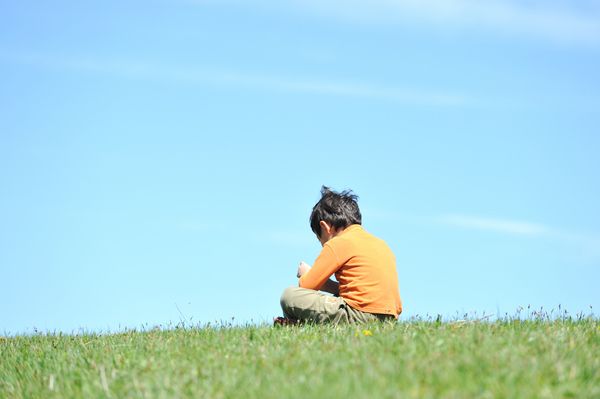Autism Signs Appear in Tot Brains as Early as 6 Months

The early signs of autism are visible in the brains of 6-month-old infants, a new study finds, suggesting that future treatments could be given at this time, to lessen the impact of the disorder on children.
Researchers looked at how the brain develops in early life, and found that tracts of white matter that connect different regions of the brain didn't form as quickly in children who later developed autism, compared with kids who didn't develop the disorder.
"The way the wiring was changing was dampened" in the children with autism, said study researcher Jason Wolff, who studies developmental disabilities at the University of North Carolina, Chapel Hill. "It was a more blunted change over time, in how the brain was being wired,"
In contrast, in the brains of infants who did not later develop autism, white matter tracts were swiftly forming, Wolff said. "Their brains were organizing themselves in a pretty rapid fashion."
The findings suggest that during a child's first year, "there is a potential to intervene, to disrupt autism before it becomes entrenched," Wolff said. "There are a lot of possibilities to improve outcomes for these children."
The study is published today (Feb. 17) in the American Journal of Psychiatry.
A crucial time
Sign up for the Live Science daily newsletter now
Get the world’s most fascinating discoveries delivered straight to your inbox.
The first year of life is an important time in brain development, and is also when the first symptoms of autism start to appear, Wolff said.
In the study, the researchers looked at the brains of 92 infants, when they were 6 months, 1 year and 2 years old. All of the children had a sibling with autism; research shows such children have a higher risk of developing the disorder themselves.
The researchers used a brain scan called diffusion tensor imaging, a type of MRI scan which allowed them to see changes in the brain's organization over time.
When the kids were 2 years old, 28 had developed autism, while 64 had not. The researchers looked back at the early brain scans, to see if there were differences between the groups.
"We looked at pathways that connect brain regions to each other, and 12 out of 15 were different in kids with autism," Wolff said.
Previous studies had found differences in brain volume in infants of this age, and other researchers had looked at white matter tracts in older children with autism, and adults, but the structures had not been examined before in infants so young, Wolff said.
The fact that so many of the tracts were affected shows that autism is a "whole-brain phenomenon," Wolff said. "There are widespread differences" in the brains of people with the disorder, he said.
What's causing the brain differences?
As to what might be causing these brain differences, it's too early to say, Wolff said. But the findings are consistent with what researchers suspect about what triggers autism's development, he said, "there's a complex interaction between genes, and a child's experiences with the world."
And while the brain scans of the two groups of children certainly revealed their differences, those scans are not at the point where they could be used to diagnose the disorder in a 6-month-old, Wolff emphasized.
But the findings help researchers better understand how the disorder develops.
"It was really important to see that this was an evolving process," Wolff said. Kids don't just suddenly become autistic, "getting there is a journey," he said.
The researchers will continue to follow some of the children in the study until they are 3 years old, and will continue to enroll more children in the study, Wolff said.
Pass it on: Changes in a baby's brain can be early signs of autism.
This story was provided by MyHealthNewsDaily, a sister site to LiveScience. Follow MyHealthNewsDaily on Twitter @MyHealth_MHND. Find us on Facebook.











